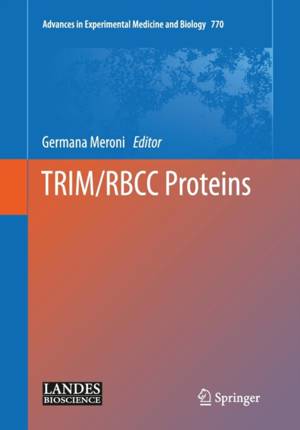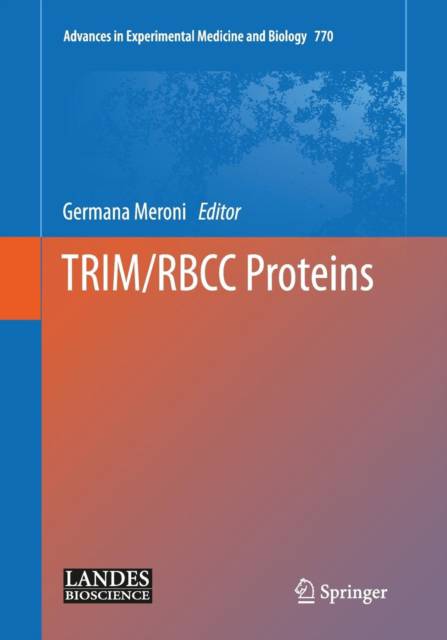
- Afhalen na 1 uur in een winkel met voorraad
- Gratis thuislevering in België vanaf € 30
- Ruim aanbod met 7 miljoen producten
- Afhalen na 1 uur in een winkel met voorraad
- Gratis thuislevering in België vanaf € 30
- Ruim aanbod met 7 miljoen producten
Zoeken
Trim/Rbcc Proteins
€ 167,95
+ 335 punten
Omschrijving
The genomic 'golden age' has delivered the sequence of numerous novel genes while leaving us with many unanswered questions about their function. This is particularly true for gene families as, often, members are annotated based on homology rather than function. The tripartite motif family belonged to this category, although, during the last few years, the field boosted an important wealth of biochemical, cellular and physiological breakthrough data. In the first part of this book, we attempt to offer an overview of state-of-the-art basic findings on the tripartite motif (TRIM, also known as RBCC) family members and to deal in the second part with their relevant and growing physiological and pathological roles.
Specificaties
Betrokkenen
- Uitgeverij:
Inhoud
- Aantal bladzijden:
- 145
- Taal:
- Engels
- Reeks:
- Reeksnummer:
- nr. 770
Eigenschappen
- Productcode (EAN):
- 9781493946600
- Verschijningsdatum:
- 22/10/2016
- Uitvoering:
- Paperback
- Formaat:
- Trade paperback (VS)
- Afmetingen:
- 178 mm x 254 mm
- Gewicht:
- 303 g

Alleen bij Standaard Boekhandel
+ 335 punten op je klantenkaart van Standaard Boekhandel
Beoordelingen
We publiceren alleen reviews die voldoen aan de voorwaarden voor reviews. Bekijk onze voorwaarden voor reviews.










